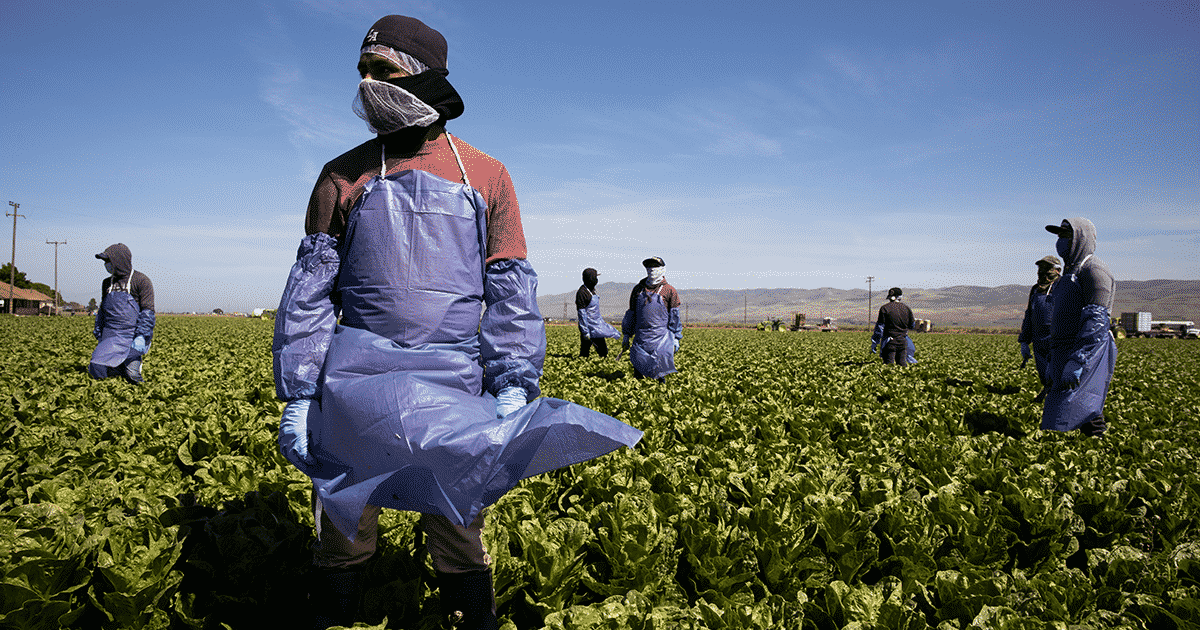
Otto Barenberg is a student at Harvard Law School.
In today’s news and commentary, the UAW wins big in a last-minute deal with Daimler and a new DOL rule bolsters labor protections for farmworkers on temporary visas.
Late Friday evening, with just hours to spare before a planned strike, the United Automobile Workers (UAW) and Daimler Truck reached a tentative agreement raising wages by 25 percent raise over four years. The deal, which covers 7,300 workers across four factories in North Carolina and two distribution centers in Atlanta and Memphis, would also institute profit-sharing, tie wages to the cost of living, and equalize pay across the German company’s U.S. facilities. The victory for Daimler employees comes amid a concerted UAW campaign to build worker power across the South, where union density is less than half the national average. Last week, workers at Volkswagen’s Chattanooga, TN factory voted 2,628 to 985 to join the UAW. On May 13, workers at a Mercedes-Benz plant in Alabama will head to the polls in another highly anticipated test of the UAW’s Southern strength.
On Friday, the U.S. Department of Labor (DOL) promulgated a final rule expanding labor protections for farmworkers on temporary H-2A visas. The rule bars employers from retaliating against H-2A workers who refuse to attend “captive audience” meetings, clarifies farmworkers’ “for-cause” termination protections, and ensures farmworkers can bring guests to employer-provided housing. Guests include health care service providers, legal aid groups, and labor organizations. The final rule substantially modifies the DOL’s initial proposal, walking back a total ban on captive audience meetings and expanding guest access to worker housing. According to the agency, the final rule “will help prevent exploitation and abuse of agricultural workers and ensure that unscrupulous employers do not financially gain from their violations.” The H-2A program now admits over 300,000 foreign workers per year, up from just 74,000 one decade ago. An aging domestic agricultural labor force and crackdowns on hirings of undocumented workers have led to soaring employer demand for H-2A workers.
Only one percent of farmworkers are represented by unions. The National Labor Relations Act excludes farmworkers from its union organizing and collective bargaining protections, and just 14 states guarantee collective bargaining rights in the agricultural sector. The DOL claims authority to expand farmworker labor protections under the Immigration and Nationality Act, which compels the agency to ensure foreign workers do not undercut Americans’ wages and working conditions. Nonetheless, employers are likely to challenge the rule as exceeding the DOL’s statutory authority, eyeing a Supreme Court skeptical of agency action.
Industry groups have also signaled their plans to challenge the guest access provisions under the Supreme Court’s 2021 decision in Cedar Point Nursery v. Hassid. In that case, the Court struck down a California regulation requiring limited labor organizer access to agricultural employers’ property as a “per se physical taking” in violation of the Fifth Amendment. The DOL, however, has suggested its rule is more limited in scope, covering only employers who choose to benefit from the H-2A program. “There’s an easy way for employers to escape what they might view as an infringement on their property rights, which is not hiring these workers,” Andrew Lyubarsky, associate general counsel at the AFL-CIO, told Bloomberg Law.






Daily News & Commentary
Start your day with our roundup of the latest labor developments. See all
December 11
In today’s News and Commentary, Biden’s NLRB pick heads to Senate vote, DOL settles a farmworker lawsuit, and a federal judge blocks Albertsons-Kroger merger. Democrats have moved to expedite re-confirmation proceedings for NLRB Chair Lauren McFerran, which would grant her another five years on the Board. If the Democrats succeed in finding 50 Senate votes […]
December 10
In today’s News and Commentary, advocacy groups lay out demands for Lori Chavez-DeRemer at DOL, a German union leader calls for ending the country’s debt brake, Teamsters give Amazon a deadline to agree to bargaining dates, and graduates of coding bootcamps face a labor market reshaped by the rise of AI. Worker advocacy groups have […]
December 9
Teamsters file charges against Costco; a sanitation contractor is fined child labor law violations, and workers give VW an ultimatum ahead of the latest negotiation attempts
December 8
Massachusetts rideshare drivers prepare to unionize; Starbucks and Nestlé supply chains use child labor, report says.
December 6
In today’s news and commentary, DOL attempts to abolish subminimum wage for workers with disabilities, AFGE reaches remote work agreement with SSA, and George Washington University resident doctors vote to strike. This week, the Department of Labor proposed a rule to abolish the Fair Labor Standards Act’s Section 14(c) program, which allows employers to pay […]
December 4
South Korea’s largest labor union began a general strike calling for the President’s removal, a Wisconsin judge reinstated bargaining rights for the state’s public sector workers, and the NLRB issued another ruling against Starbucks for anti-union practices.